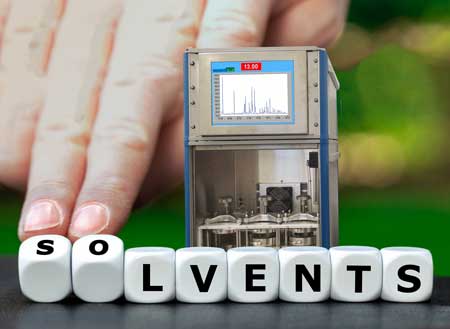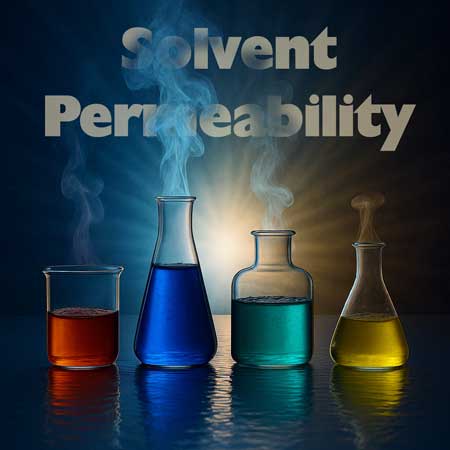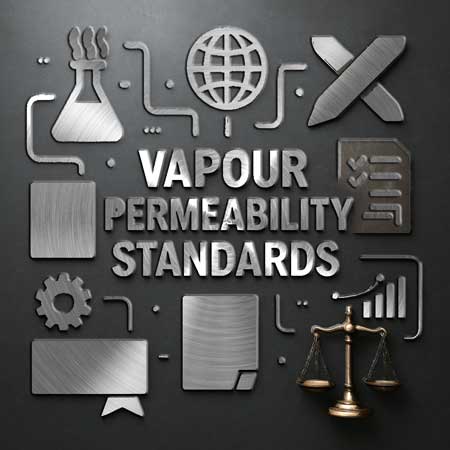

 Measuring the vapour permeability of solvents is crucial across many industries for both performance and regulatory reasons. The key motivations generally fall into six main categories:
Measuring the vapour permeability of solvents is crucial across many industries for both performance and regulatory reasons. The key motivations generally fall into six main categories:
1. Preventing Product Degradation and Solvent Loss
Solvents often play a vital role in maintaining a product’s functionality—such as in adhesives, inks, coatings, cosmetics, fuels and pharmaceuticals. If they evapourate too quickly through packaging or barrier layers, the product can:
Why it matters:
Vapour permeability testing ensures materials can effectively retain solvents during shelf life and use.
2. Designing and Validating Barrier Materials
Technical films, membranes, laminates and coatings are widely used to block or regulate vapour transmission. Measuring solvent vapour permeability is essential when selecting or engineering:
Why it matters:
To validate that materials perform to specification, meet safety standards and maintain chemical resistance.
3. Optimising Separation Processes (e.g. Pervapouration)
In chemical engineering and membrane technology, solvents are intentionally separated using vapour permeability. This includes:
Why it matters:
Accurate measurement helps engineers select the most effective membrane and operating conditions for selective separation.
4. Ensuring Safety in Hazardous Environments
In sectors such as defence, aerospace, manufacturing and firefighting, protective equipment is often exposed to toxic or flammable solvents. Understanding how vapours permeate through gloves, suits or enclosures is vital for:
Why it matters:
Testing ensures that personal protective equipment (PPE) resists harmful solvent vapours under real-world conditions.
 5. Complying with Environmental and Regulatory Requirements
5. Complying with Environmental and Regulatory Requirements
Solvent vapours often contribute to:
Why it matters:
Measuring and controlling vapour permeability helps meet environmental regulations, reduce emissions and avoid liability.
6. Supporting R&D, Material Innovation and Quality Control
Developers of new materials—such as bio-based films, nanocomposites, or smart packaging—must benchmark their vapour barrier properties during formulation and scale-up.
Why it matters:
Permeability testing provides vital feedback for formulation refinement, quality assurance and competitive comparison.
Summary
In short, vapour permeability measurement of solvents is essential to:
Applications of the vapour permeability of solvents
Vapour permeability of solvents - how easily solvent vapours can pass through materials - is a critical factor in many industrial and commercial applications, particularly in industries where barrier performance, safety, material compatibility and product longevity matter. Below are the main application areas:
1. Packaging Industry
Key Application: Barrier materials for packaging
2. Chemical Processing and Storage
Key Application: Containment and transport of volatile substances
 3. Protective Clothing and PPE
3. Protective Clothing and PPE
Key Application: Breathable yet solvent-resistant garments
4. Automotive and Aerospace
Key Application: Material selection for seals, linings and barriers
5. Adhesives, Sealants and Coatings
Key Application: Controlling curing and solvent retention/loss
6. Membrane Technologies
Key Application: Controlled permeation for separation processes
7. Environmental Protection and Remediation
Key Application: Barriers to vapour intrusion
8. Construction Materials
Key Application: Breathability and barrier function in building materials
Summary Table
Industry |
Application |
Solvent Permeability Role |
Packaging |
Food, pharma, cosmetics containers |
Prevent vapour loss or ingress |
Chemical |
Storage tanks, drums |
Safety, regulatory control of emissions |
PPE |
Hazmat suits, gloves |
Block harmful vapours, allow perspiration |
Automotive |
Fuel systems, seals |
Limit vapour emissions |
Adhesives/Coatings |
Paints, sealants |
Manage evapouration, durability |
Membranes |
Pervapouration, fuel cells |
Selective vapour transport |
Environmental |
Liners, vapour barriers |
Block VOCs and hazardous vapours |
Construction |
Wall wraps, roofing |
Moisture/vapour control in structures |
Standards for the vapour permeability of solvents
there are several international and industry standards that relate to the permeability of solvents, though they are more fragmented than those for water vapour or gases. These standards typically fall under:
Here’s a list of the most relevant British (BS), European (EN), American (ASTM) and international (ISO) standards related to solvent vapour permeability:
1. Protective Clothing and Gloves
These standards test how well materials resist chemical vapour and solvent permeation, often using specific solvents:
2. Barrier Films, Packaging and Materials
These deal with solvent or VOC permeability in packaging films, coatings or laminates:
 3. Fuel System & Automotive Materials
3. Fuel System & Automotive Materials
Solvent-like fuels (e.g. ethanol blends, benzene) are tested for vapour emissions through materials:
4. Membranes and Pervapouration
5. Miscellaneous / Research Use
Summary Table:
| Standard | Area |
Notes |
EN ISO 6529 |
Clothing & PPE |
Solvent/gas permeation |
ASTM F739 |
Protective materials |
Widely used with solvents |
ISO 15105-1/-2 |
Films & packaging |
Adaptable to solvents |
ASTM D814 |
Rubber materials |
Organic vapour permeation |
SAE J2659 |
Fuel permeation (auto industry) |
For ethanol and other volatile solvents |
ASTM D6978 |
Chemotherapy glove permeation |
Includes solvents in testing |
Custom/MS-based |
Lab/industrial applications |
For multi-solvent or low ppm analysis |
Click here for a press release on industrial permeability testing
Click here for a general article on the solvents from Wikipedia
Click here for an article on hydrocarbon permeability measurement